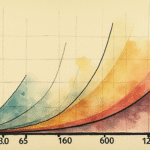Introduction
The United States economy is currently facing the repercussions of Donald Trump’s chaotic economic policies, which have distanced the country from its allies and partners worldwide. His intimidation tactics foster instability, causing concern for global confidence in the US dollar.
Economic Growth and Confidence
According to the International Monetary Fund, the US economic growth for this year is projected at a mere 1.4%, down from 2.1% in 2024. The decline in confidence in the US economy is evident, with a 10% drop in the value of the dollar against the euro and Swiss franc. Canadian tourism to the US has plummeted by 40%, an unprecedented level. Immigrants are living in fear due to the repressive decisions, making up 30% of the hotel workforce and 75% of agricultural labor.
Impact on Productivity and Innovation
Massive budget cuts to basic scientific research are affecting the growth of economic productivity and the US’s leadership in innovation. Government-funded research has been responsible for a quarter of the productivity growth in the business sector since World War II.
Social Inequality and Government Debt
These budgetary restrictions disproportionately shift income from the poor to the rich, leaving 18 million people without health insurance and 3.2 million adults and one million children without food assistance. The federal government’s debt has increased by $3 trillion, with a significant portion held by Chinese banks.
Expert Opinions and Trade Tensions
Desmond Lachman states, “Since taking office, President Donald Trump has been systematically undermining market confidence in the US dollar and economy. If he continues to ignore these warnings, the US should brace for a dollar and bond market crisis before next year’s midterm elections.”
Trump’s decisions cater to specific interests, such as the proposed 50% tariff on Brazilian imports. Brazil, like China, is part of the BRICS group, accounting for 35% of global GDP and wielding significant international influence. Higher tariffs imposed by the US on Mexico have reduced its competitiveness.
Latin American Economic Challenges
Latin America is trapped in a tunnel of economic stagnation, social frustration, and political chaos. Dreams of Latin American cooperation remain unfulfilled.
Key Questions and Answers
- Q: How are budget cuts affecting the US economy? A: Budget cuts are negatively impacting productivity growth and innovation, as government-funded research plays a crucial role in business sector productivity growth.
- Q: What is the current state of the US economic growth? A: The IMF projects a 1.4% growth rate for the US economy in the current year, down from 2.1% in 2024.
- Q: How are Trump’s trade policies affecting global confidence? A: Trump’s intimidation tactics and specific interest-driven decisions, such as proposed tariffs on Brazil and Mexico, are causing instability and reducing competitiveness in global markets.
- Q: What are the social implications of budget cuts? A: Budget cuts disproportionately shift income from the poor to the rich, leaving millions without health insurance and food assistance.
- Q: What challenges does Latin America face? A: Latin America is grappling with economic stagnation, social frustration, and political chaos, hindering regional cooperation.






